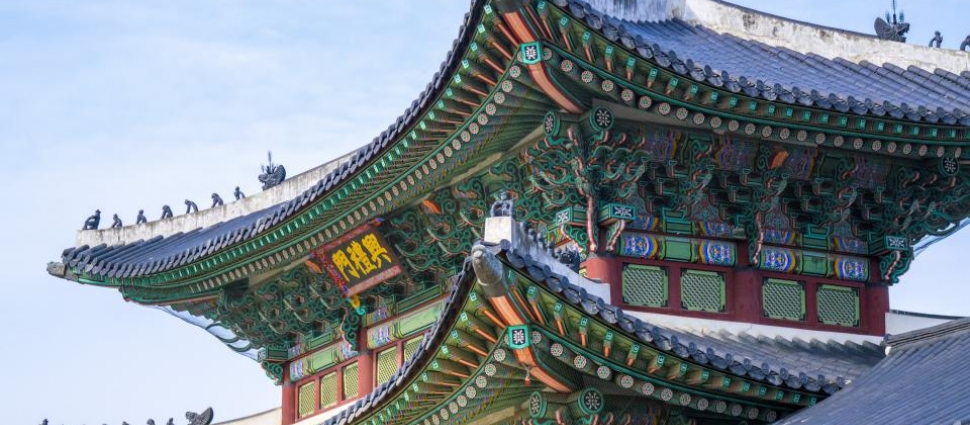Gi Pung Yi – First Korean Martyr

Gi Pung Yi – First Korean Martyr
He was the first Korean Protestant missionary and the first Korean martyr, often remembered as the father of the Korean Protestant church. It all began through a rock and a bout of hot temper.
A Paul-like Conversion
Gi Pung Yi was only sixteen in 1885, when the American missionary Samuel A. Moffet arrived in Pyeongyang (today in North Korea). Yi distrusted foreigners. Why did this American come to Pyeongyang?, he wondered. Used to dealing with problems through violence, he gathered some friends and went to Moffet’s house, where they kicked the gate and threw rocks. The rocks broke a window and dislodged some roof tiles, but the Moffet family stayed inside.
One month later, Yi spotted Moffet at a street market, speaking in broken Korean while holding a track. Seeing his chance of protesting this foreigner’s intrusion, Yi picked up a rock and threw it, hitting Moffet in the chin. Losing his balance, Moffet fell on the ground, bleeding. No one came to his help. Yi left the scene.
Fast-forward ten years, when Yi met another missionary, this time in Wonsan, where he had looked for refuge during the Sino-Japanese war. By then, he was a young man trying to make ends meet by painting pipes and selling them on the street.
To Yi, the missionary, William L. Swallen, looked enough like Moffet to bring back a painful memory. For years, Yi’s conscience had been bothering him and Moffet had appeared in many of his dreams.
A missionary spoke to Yi about Jesus, who didn’t pay much attention. He just wondered who was this Jesus that people considered so important. That night, however, he had a dream where Jesus told him to stop persecuting him. Frightened, the next morning he ran to the house of the missionary who had talked to him.
After hearing Yi’s confession, the missionary took him to Swallen’s house, where Yi, crying profusely, continued to unburden his heart. Swallen prayed for him, and continued to teach him about Christ. Yi was baptized in 1896, and worked with Swallen to establish a church in Wonsan. Yi’s dream and his conversion from bully to evangelist led some to nickname him “the Apostle Paul of Korea.”
Evangelist and Missionary
Yi helped to spread the gospel in Wonsan and surrounding region by distributing Bibles and gospel literature (as a colporteur or, in Korean, gwonseo). By answering questions, gathering interested people and establishing contacts, gwonseos played an important role in the institution of the Korean church.
In 1901, Yi returned to Pyeongyang, his beloved hometown, where his friends could hardly recognize him. The bully they knew had turned into a humble and concerned man. One of the first things he did was to gather the same group of stone-throwers who had attacked Moffet’s house and go to apologize to the missionary.
When he saw Moffet, his scar still visible on his chin, Yi was once again overwhelmed, but Moffet was quick to welcome him and rejoice with him.
Eventually, Yi became an elder in the local church. In 1903, he was admitted to Pyeongyang Presbyterian Seminary. When he graduated four years later, Moffet was one of the men on the examining board who approved his ordination, as well as that of six other Koreans.
The next year, the presbytery sent Yi as the first missionary to Jeju Island, off the coast of today’s South Korea. The mission was difficult from the start, when a stormed caused his boat to be wrecked. Yi was rescued by a woman from the island who was diving for shellfish (a common occupation of local women). He caught the opportunity to present her with the gospel, and she became one of the first converts on the island.
But the difficulties continued. Being cut off from mainland, the islanders were even more diffident than other Koreans of what they considered foreign religions. Their ancestral religion, together with shamanism and Buddhism, played important roles in their daily lives. Yi won their trust by visiting families and helping them with their day-to-day needs. For example, he helped in the homes while the women went out diving for fish, assisted the men with farm work, and brought aid to families who were hit by floods (a frequent occurrence in an island heavily struck by rainstorms).
All these efforts seemed to have been ruined when he shared some information about the customs of the islanders with Hanseon Sunbo, Korea’s first modern newspaper and the official voice of the Korean government. Feeling betrayed, the islanders tried to stone Yi. The relationship was healed through the intervention of Yung Hyo Park, a respected politician.
Yi stayed in the island until 1915, founding ten churches. After that, he served in different churches in Korea. In 1936, when the Japanese who had taken over Korea enforced the worship of Shinto shrines, Christians became divided in their opinions. Some saw bowing to Shinto shrines as a harmless gesture, like saluting a flag, while others opposed it fiercely. Yi was in the second group.
In 1938, the Presbyterian General Assembly caved in to the pressure and became tolerant of Shinto worship. Yi and other pastors in his synod rejected this position, and absented themselves from the general assembly of 1940-1941.
Their absence was noticed by the authorities. Yi, then in his seventies, was arrested, accused of being a spy for America, and tortured at length. He was released in 1942, when it was obvious that his body was not going to last long. He died on June 20, 1942, after a last communion service at the Wuhakni Church.





